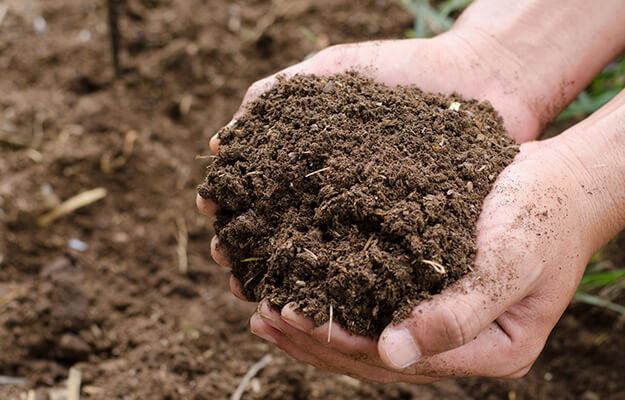ASSISTING ALL LIFE
EVERYWHERE
It is difficult at first to grasp the enormity of the potential that molecular hydrogen supplementation offers both to our planet and the way we live our lives. It is the single most important element of life itself and allows balance for all things that live. Unfortunately for many of us, today’s world means that our environment is becoming increasingly polluted and the nutritional value of our food is diminishing. This does not just reflect on the human relevance, but our entire ecosystem as a whole because every species will inevitably have to deal with the same biological challenges as we do – if we continue down our current path.
Hydrogen is the biological key to unlock the true potential of what a balanced metabolism is capable of producing. We can easily see the results of what imbalance brings with dis-eased crops and stock, infertility, stress, smaller fruit, smaller harvests and poor nutritional content, and so on. Hydrogen deficiency will potentially have a catastrophic result on an organism, whereas an abundance of molecular hydrogen and its bioavailable electrons will result in an ability to thrive, regenerate and multiply.


SHARE OUR
DREAM
Hydrogen Technologies aspires to be the recognised industry standard supplier for the biology-based hydrogen industry. We intend to increase the quality of life for those living with ailments and dis-ease and to reduce the financial burden of health care for preventative illness by improving entire food chain health and nutritional content.
The Hydrogen Technologies vision incorporates multiple manufacturing and production divisions along with several market specific sub-divisions and many affiliations with marketing, sales and partnerships. We offer value-added service opportunities to a huge number of people who also see what we see – to share our dream of creating value, and doing no harm.
WE AIM TO

REDUCE
The chemical and pharmaceutical dependency across all farming and environmental management practices by improving the cellular health, strength and sustainability associated with a completely healthy and natural system.
IMPROVE
Agricultural productivity by processing and extending the shelf life of products, enabling a significant reduction of food waste globally.

DECREASE
The burden of disease expenses for all governments the world over through education, empowering people with the knowledge to understand and embrace the significance that hydrogen plays in all life, including their own.
INDUSTRY SECTORS AND APPLICATIONS
In any industry application, the first thing to do is to provide molecular hydrogen and oxygen supplementation to a living organism by making the gases in a clean and efficient manner without contamination.

HORTICULTURE
Controlled environments improve management requirements and reduce risk, increased growth rates are possible with better nutritional content and more fruit set.















AGRICULTURE
Remarkable drought tolerance improvements, salinity resistance, possibility of lower water allocation requirements, improved soil life, stronger healthier livestock.

CROPPING
Water management methods determine appropriateness however irrigation, flood, artesian supply enrichment, bore water enrichment are all possible enrichment points.

NATURE
Healthy gut – healthy body. Healthy soil – healthy plant. The balance of hydrogen and oxygen are at the core of life and all things can be traced back to it.

AQUACULTURE
Fresh water, sea water, open ponds, enclosed systems, hatcheries, holding facilities, fishing vessels, export and transport, aquariums and marketplaces, the list goes on.

HYDROPONICS
Controlled environments improve management requirements and reduce risk, increased growth rates are possible with better nutritional content and more fruit set.

AQUAPONICS
Both fish and plant will benefit from the life giving properties associated with creating an environment biased towards aerobic life in general.

BORE WATER
Deep wells can also be void of oxygen content but infusing both hydrogen and oxygen can change the desert and ecosystem around it.

WATER
There are so many applications in general that enriching hydrogen and oxygen into water will benefit aerobic life be it in nature, farming, drinking or bathing. The source of life itself.

FLORICULTURE
Vibrant healthy flowers and improved post-harvest lifespans. Improved pollination, more honey, stronger plants and extended market life.

ANIMALS
From dairy cattle to race horses, from disease resistance to recovery, dogs, cats and even goldfish will benefit. Breeding programs, Zoos and bushfire recovery.

FOOD
Cleaner, organic, fresher, chemical and pharmaceutical free, nutritious, healthy, abundant, it is all about our entire food chain. Clean it up, and it will clean us up.

ENVIRONMENT
The most abundant element in the universe and the energy source of life itself. Oxidation is the deficiency of Hydrogen. Inescapable and universal.

SOIL
Supplementing where soil is deficient in microbial life due to drought, heat or salinity issues may bring back life where hope was lost. More farmland, more farming potential.
It is broad and diverse, all creatures great and small, our
food chain and our planet as we know it.
FUTURE MARKETS AND
GLOBAL DEMAND
The science and potential of molecular hydrogen supplementation is commanding serious attention and although there is already a huge amount of science on the subject, we are still only scratching the surface and there is a lot more still to be done.
It is expected that there will be significant advancement in the field of wellness and prevention over the coming years as more and more governments accept the enormous economic benefits this technology will bring. Populations the world over will demand change as the never-ending onslaught of toxins and contaminants further penetrate our food and water supplies with ever increasing negative consequences.
There is an expansive and diverse international market eagerly waiting for ways to access the benefits of molecular hydrogen where currently the global wellness industry is reported to be worth in excess of 4.2 trillion dollars and growing by about 6% per annum. Benefits will inevitably create a demand that will ultimately force a change for the betterment of us all in a manner of different ways including positive impacts on overstretched health systems as well as the farming practices of many products.
According to an in-depth research report released at the 12th annual Global Wellness Summit held at Technogym Village in Cesena, Italy, there are ten markets that comprise the global wellness economy, providing fresh evidence that wellness remains one of the world’s biggest and fast-growing industries.
• From 2015-2017, the wellness economy grew 6.4% annually, nearly twice as fast as global economic growth (3.6%)
• Wellness expenditures ($4.2 trillion) are now more than half as large as total global health expenditures ($7.3 trillion)
• The wellness industry now represents 5.3% of global economic output.
SPOTLIGHT ON
MARKETS
- Wellness Real Estate
- Workplace Wellness
- Wellness Tourism
- Spa industry
- Thermal & Mineral Springs
Wellness Real Estate
Real estate that incorporates intentional wellness elements into its design, materials and building, as well as its amenities and programming, is growing fast as more people want to bring more health into the places where they spend the majority of their time.
For comparison, the $134 billion wellness real estate market is now about 1.5% of the total annual global construction market and about half the size of the global green building industry. There are now more than 740 wellness real estate and community developments built or in development across 34 countries – a number that is growing weekly.
Workplace Wellness
Valued at $47.5 billion, the workplace wellness market remains very small in comparison to the massive economic burden and productivity losses (10-15% of global economic output) associated with an unwell and disengaged workforce. Only 9.8% of world employees are covered by a workplace wellness program (321 million people), and programs are heavily concentrated in high-income countries in North America, Western Europe and Asia.
Wellness Tourism
The $639 billion wellness travel market’s annual growth rate of 6.5% from 2015-2017 is more than double the growth rate for tourism overall (3.2%). World travellers made 830 million wellness trips in 2017, 139 million more than in 2015 – and these trips now represent 17% of total tourism expenditures. Wellness tourism growth is very much a tale of developing markets, with Asia-Pacific, Latin America-Caribbean, Middle East-North Africa and Sub-Saharan Africa all clocking robust gains, and accounting for 57% of the increase in wellness trips since 2015.
Over the past five years, Asia is #1 to gain in both wellness tourism trips and revenues (trips grew a whopping 33% in two years, to 258 million annually). China and India rank #1 and #2 for growth worldwide, adding over 12 million and 17 million wellness trips respectively from 2015-2017. The events of 2020 have decimated this sector however local demand is expected to boom given the state of travel restrictions we now endure.
Spa industry
The spa economy, which includes spa facility revenues (now $93.6 billion yearly), education, consulting, associations, media and event sectors that enable spa businesses (now $25.2 billion), has grown to a $118.8 billion market. Spa locations jumped from 121,595 in 2015 to over 149,000 in 2017, employing nearly 2.6 million workers. The 9.9% annual revenue growth for spas is much higher than the pace from 2013-2015 (2.3%). From 2015-2017, the hotel/resort spa category added the largest number of spas and revenue and has now surpassed day/salon spas as the industry’s revenue leader.
Thermal & Mineral Springs
The thermal/mineral springs market continues to clock strong growth as more people turn to water for stress relief, healing and community. The market grew from $51 billion in 2015 to $56.2 billion in 2017, while facilities jumped from 27,507 (in 109 countries) to 34,057 (in 127 countries) – employing 1.8 million workers. The market is intensely concentrated in Asia-Pacific and Europe, which account for 95% of revenues.
- Wellness Real Estate
- Workplace Wellness
- Wellness Tourism
- Spa industry
- Thermal & Mineral Springs
Wellness Real Estate
Real estate that incorporates intentional wellness elements into its design, materials and building, as well as its amenities and programming, is growing fast as more people want to bring more health into the places where they spend the majority of their time.
For comparison, the $134 billion wellness real estate market is now about 1.5% of the total annual global construction market and about half the size of the global green building industry. There are now more than 740 wellness real estate and community developments built or in development across 34 countries – a number that is growing weekly.
Workplace Wellness
Valued at $47.5 billion, the workplace wellness market remains very small in comparison to the massive economic burden and productivity losses (10-15% of global economic output) associated with an unwell and disengaged workforce. Only 9.8% of world employees are covered by a workplace wellness program (321 million people), and programs are heavily concentrated in high-income countries in North America, Western Europe and Asia.
Wellness Tourism
The $639 billion wellness travel market’s annual growth rate of 6.5% from 2015-2017 is more than double the growth rate for tourism overall (3.2%). World travellers made 830 million wellness trips in 2017, 139 million more than in 2015 – and these trips now represent 17% of total tourism expenditures. Wellness tourism growth is very much a tale of developing markets, with Asia-Pacific, Latin America-Caribbean, Middle East-North Africa and Sub-Saharan Africa all clocking robust gains, and accounting for 57% of the increase in wellness trips since 2015.
Over the past five years, Asia is #1 to gain in both wellness tourism trips and revenues (trips grew a whopping 33% in two years, to 258 million annually). China and India rank #1 and #2 for growth worldwide, adding over 12 million and 17 million wellness trips respectively from 2015-2017. The events of 2020 have decimated this sector however local demand is expected to boom given the state of travel restrictions we now endure.
Spa industry
The spa economy, which includes spa facility revenues (now $93.6 billion yearly), education, consulting, associations, media and event sectors that enable spa businesses (now $25.2 billion), has grown to a $118.8 billion market. Spa locations jumped from 121,595 in 2015 to over 149,000 in 2017, employing nearly 2.6 million workers. The 9.9% annual revenue growth for spas is much higher than the pace from 2013-2015 (2.3%). From 2015-2017, the hotel/resort spa category added the largest number of spas and revenue and has now surpassed day/salon spas as the industry’s revenue leader.
Thermal & Mineral Springs
The thermal/mineral springs market continues to clock strong growth as more people turn to water for stress relief, healing and community. The market grew from $51 billion in 2015 to $56.2 billion in 2017, while facilities jumped from 27,507 (in 109 countries) to 34,057 (in 127 countries) – employing 1.8 million workers. The market is intensely concentrated in Asia-Pacific and Europe, which account for 95% of revenues.









